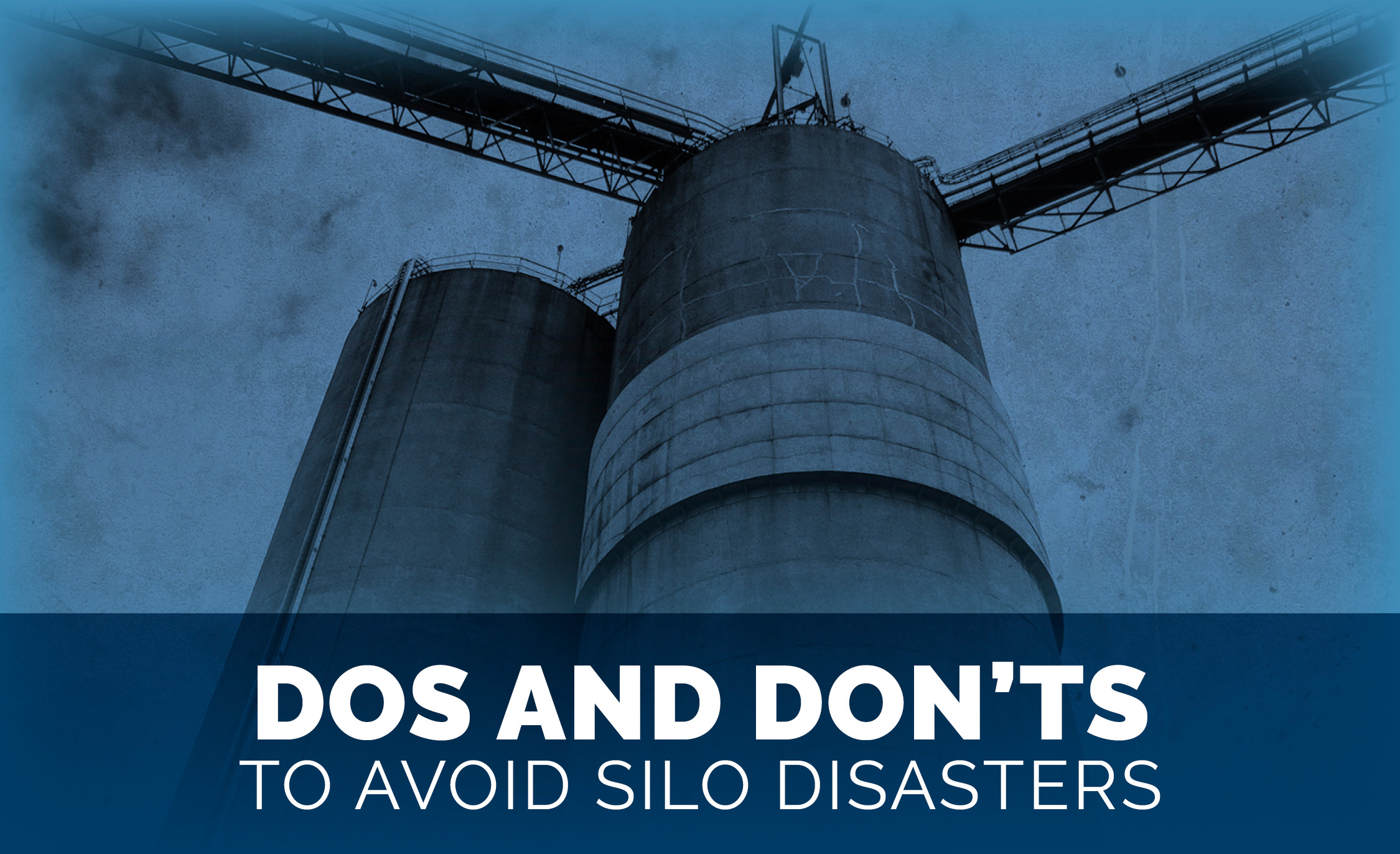Silo Inspection Blogs
CATEGORIES
While the end of the year is often chaotic, it's a good time to make sure silo maintenance services like restoration and repair are included in your facility production schedule. Repairing silo problems quickly, before they become an emergency, helps save money and can reduce or eliminate safety issues. Investing in professional silo inspections and restoration is a cost-effective solution, as it can lead to long-term savings, reduce liability, and minimize unplanned downtime which can result from silo failure if issues are not addressed quickly.
The potential repercussions of emergency silo problems can be devastating, ranging from unexpected downtime and loss of income to complete silo failure and even fatalities. Taking care of small problems quickly can help keep the cost of owning a silo to a minimum since major repairs, catastrophes, and structural issues require more money and time to fix and can cause downtime that was not planned.
Many silo repairs need design and engineering input. We boast restoration supervisors with more than 50 years of experience designing and building a restoration project right the first time. We make sure to trace the source of damage to the silo during any rehabilitation project and use those results to inform our design process to stop any future harm.
Mapping silo restoration services into periods of planned downtime is also a great way to keep costs low. Planning regular check-ups during the more moderate months can save you money by spotting potential issues early and lessening the amount of time you spend offline. Building silo restoration into temperate times of the year, like the spring and fall, tends to provide better working conditions for a variety of silo repairs. These ideal weather conditions can make a repair or restoration go more quickly - reducing the cost of labor and your downtime.
To reduce silo repair costs further, complete your silo inspection and silo restoration or silo repair in one mobilization with the Marietta Silos, or USA Silo Service, Mobile Inspection Trailer. Finishing small silo repairs at the same time as your silo inspection reduces additional unplanned downtime and additional trips necessary to get your silo back up and running.
Contact us to schedule your next silo repair, restoration, or inspection.
It's easy to overlook your silo, but it's beneficial to make it part of your routine to inspect it for any signs of alteration, such as concrete cracking or roof-top coatings peeling and flaking. While you should regularly examine your silo exterior, the only reliable way to determine what preventive maintenance is needed is to have a professional inspect the silos.
Silo inspection is the most effective, preventive method to ensure concrete and steel structures, surfaces, and silos remain safe and fully operational. Professional silo inspection covers more areas of the silo than an in-house inspection. During a professional inspection, experts with experience in inspection and/or a trained silo engineer will thoroughly analyze your silo(s) to identify any major issues.
Artificial intelligence (A.I.) supplemental inspections, offered exclusively by Marietta Silos, remove any guesswork regarding exterior silo inspection. Using drone capture technology, Marietta Silos can quickly and precisely inspect external silos or bulk storage containers with extreme accuracy. These images are then run through our A.I. algorithms, which are able to detect even small defects (smaller than 0.1 mm) and map the precise location onto the captured silo image for future examination.
Following a thorough, professional silo inspection, you receive a detailed list of recommended silo repairs. Taking action on the proposed silo repairs and maintenance ahead of time will help maintain the silo and lessen the likelihood of costly silo restoration down the line. The cost of preventive maintenance and silo restoration is minimal compared to the financial and physical toll that a full collapse can have on your company and team.
Best practices recommend professional inspections at two- to five-year intervals to help identify any issues that could lead to silo failure. For more information on silo intervals, view our video, How Often Should I Have My Silo Inspected, or plan your next silo inspection.

Modern silos have been used since the late 19th century. Yet since that time, their design, construction, and recommended maintenance services have undergone drastic changes to improve safety. Here are the top ways facility owners and managers can help prevent storage silo disasters.
|
|
||||||||||||||||||||||||||||||||||||||||||||||||||||||||||||||||
Is your silo in need of repair or restoration? Contact us today for a quote.







